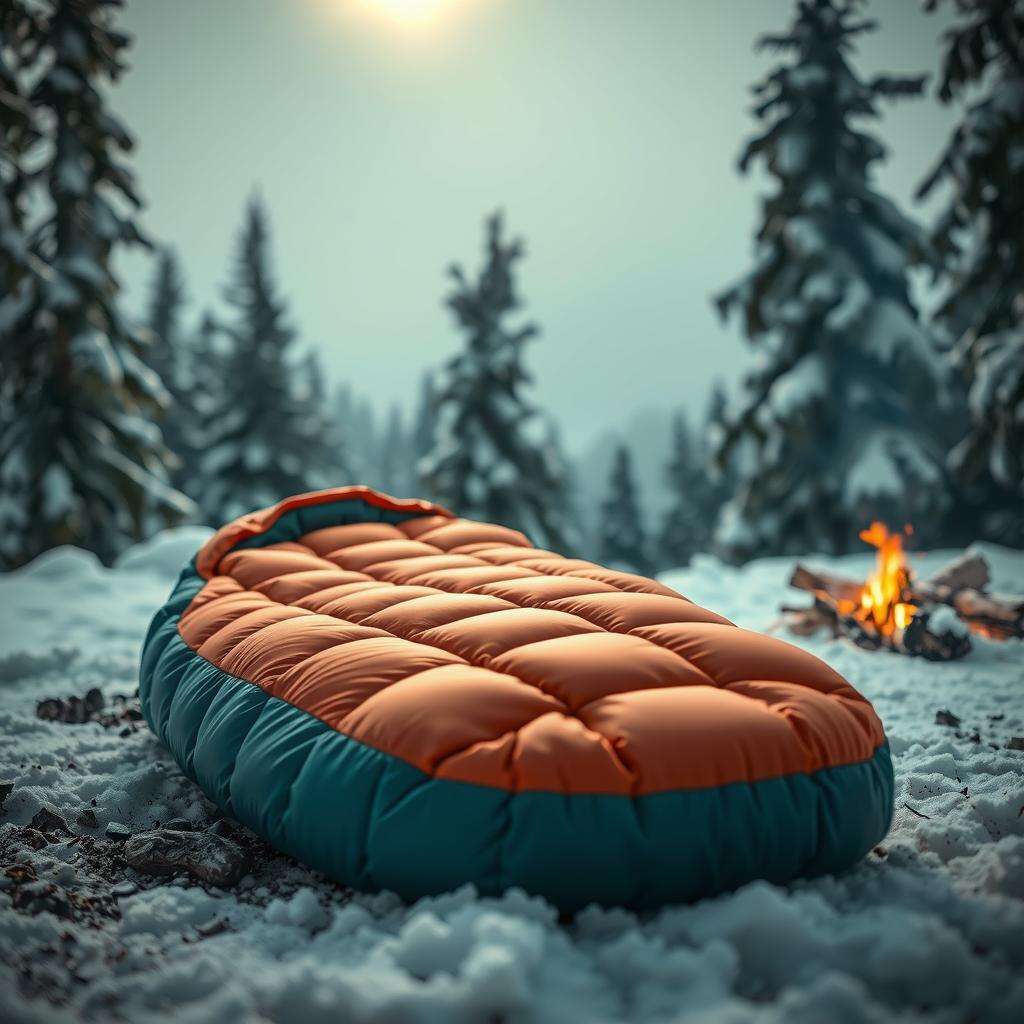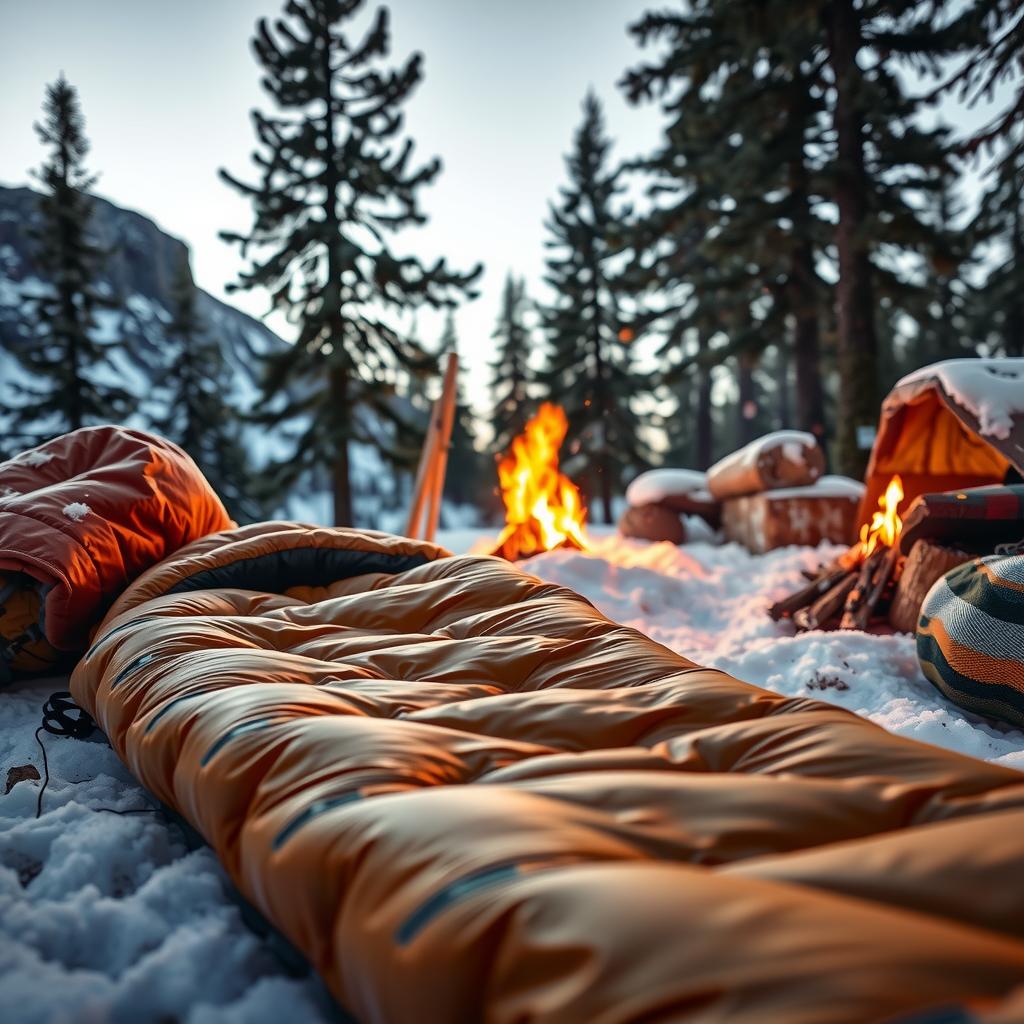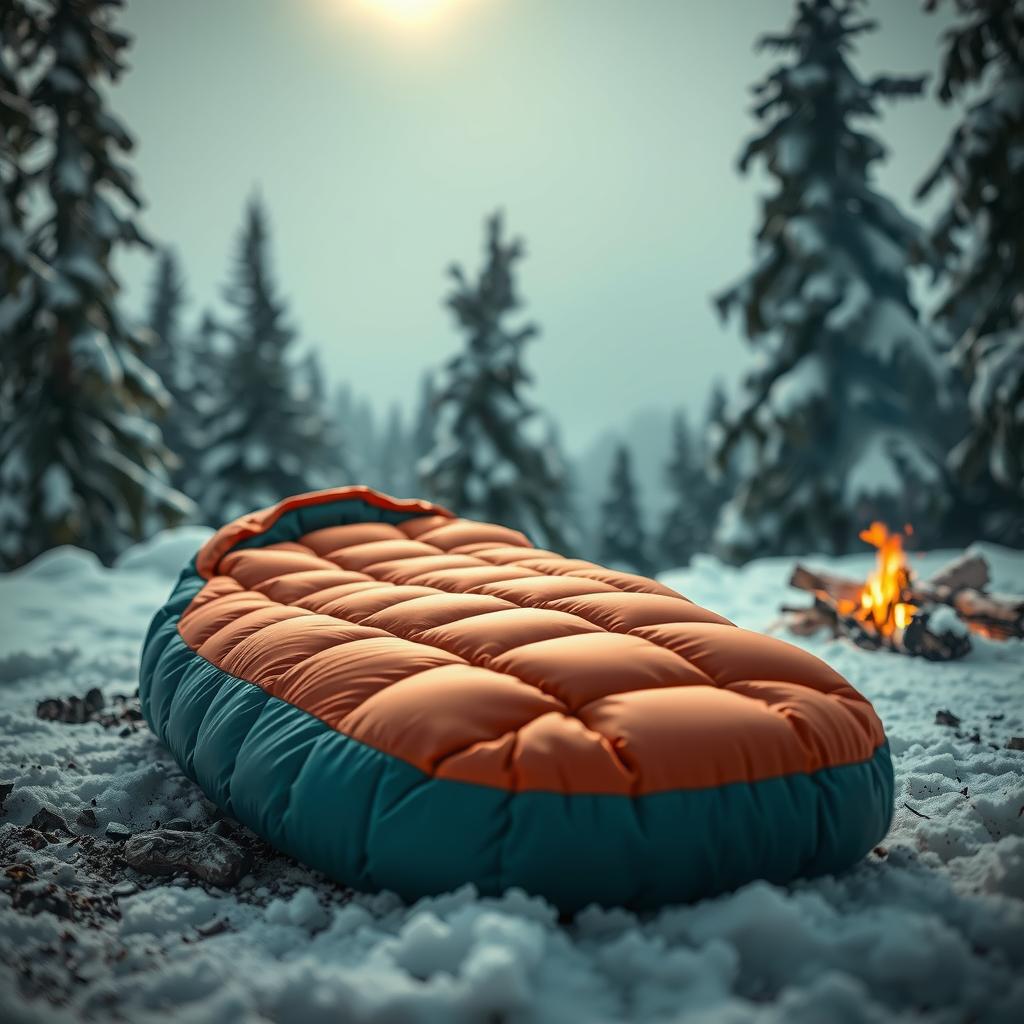When temperatures plummet to a bone-chilling -20°F, the thought of winter camping can seem daunting. Many outdoor enthusiasts grapple with the challenge of staying warm and comfortable in such extreme conditions, often questioning whether their Down Sleeping Bag will provide adequate insulation performance for a good night’s sleep. As winter campouts become increasingly popular among adventurers seeking solitude in snowy landscapes, selecting the right cold-weather gear is crucial. With numerous options available on the market, it can be overwhelming to navigate through various models and specifications.
This blog post aims to shed light on some top-rated Down Sleeping Bags, specifically designed for frigid temperatures. By exploring temperature ratings, comfort levels, packability features, and durability factors associated with these sleeping bags, readers will gain insight into what makes them ideal companions for winter excursions. A well-constructed Down Sleeping Bag not only ensures warmth but also adds convenience when it’s time to set up camp or pack up after an adventure.
Moreover, understanding how different designs impact insulation performance can help campers make informed decisions tailored to their specific needs. Whether one prioritizes lightweight construction or long-lasting durability in their choice of outdoor equipment, this guide offers valuable information that addresses key concerns faced by those venturing into icy terrains.
As we delve deeper into our reviews of various Down Sleeping Bags, readers are encouraged to consider how essential these products are when preparing for a successful winter camping experience. From identifying standout features that enhance warmth retention to highlighting user-friendly aspects like portability and storage capabilities—this article equips adventurers with critical knowledge necessary for braving the cold while enjoying nature’s beauty without compromising comfort or safety.
Join us as we explore some remarkable options within this category that promise not just survival against subzero temperatures but also elevate your overall outdoor experience during those unforgettable winter nights under starry skies.

Key Points:
-
Insulation Performance: Essential for Extreme Cold
A high-quality Down Sleeping Bag is crucial for winter camping, especially when temperatures drop to -20°F. The insulation performance of these sleeping bags ensures that campers remain warm throughout the night. Efficient down fill traps body heat while minimizing cold air infiltration, making it vital to choose a bag designed specifically for frigid conditions. -
Comfort Level and Temperature Rating: A Balance Between Warmth and Rest
When selecting a Down Sleeping Bag, comfort level significantly influences overall satisfaction during outdoor adventures. The temperature rating provides insights into how well the bag can perform in specific cold weather scenarios. Campers should look for options that balance warmth with user feedback on comfort levels, ensuring an enjoyable sleep despite harsh nighttime conditions. -
Durability Factors and Packability Features: Preparedness Meets Portability
For outdoor enthusiasts, durability factors play a vital role in choosing reliable cold weather gear. A well-constructed Down Sleeping Bag withstands rugged terrain and prolonged exposure to elements without losing its insulating properties. Additionally, lightweight sleeping bags featuring packability features allow adventurers to carry their essential equipment easily without compromising on warmth or functionality during winter camping trips.

Understanding Insulation Performance
The Importance of Insulation in Cold Weather
When selecting a down sleeping bag for winter camping, one of the most critical factors to consider is its insulation performance. Down insulation is renowned for its superior warmth-to-weight ratio, making it an ideal choice for those venturing into cold weather. Unlike synthetic alternatives, down sleeping bags provide better compressibility and loft, which means they can pack down smaller without sacrificing warmth. This feature is particularly advantageous during winter excursions where space in backpacks is limited. Moreover, the quality of the down—often measured by fill power—plays a pivotal role in determining how effective a sleeping bag will be at trapping heat and providing comfort. A higher fill power indicates more air pockets within the down clusters that trap body heat effectively; thus, a lightweight sleeping bag with high fill power can keep campers warm even when temperatures drop significantly.
It’s essential to note that not all down materials are created equal; therefore, opting for ethically sourced and responsibly treated goose or duck feathers enhances both durability and insulation properties. When investing in a down sleeping bag, prospective buyers should also look out for moisture-resistant treatments that help maintain thermal efficiency even in damp conditions—a common occurrence during winter camping trips. As outdoor enthusiasts understand well, maintaining body heat while minimizing weight becomes crucial when trekking through snowy terrains or setting up camp on chilly nights.
Evaluating Temperature Ratings
Finding Your Ideal Comfort Level
Temperature ratings serve as another vital aspect when choosing the right down sleeping bag for your winter adventures. These ratings indicate the lowest temperature at which you can expect to sleep comfortably without risking hypothermia or discomfort from excessive cold exposure overnight. It’s important to recognize that personal comfort levels vary greatly among individuals due to factors such as metabolism and clothing choices worn inside the bag.
For optimal performance during frigid nights outdoors, selecting a sleeping bag rated lower than expected nighttime temperatures allows some margin of safety against unexpected drops or prolonged exposure outside one’s tent shelter. Many manufacturers provide “comfort” and “extreme” temperature ratings; understanding these distinctions enables users to make informed decisions based on their specific needs rather than relying solely on general guidelines provided by brands alone.
Furthermore, incorporating additional layers like insulated liners or wearing appropriate base layers adds versatility to any chosen model while improving overall thermal efficiency further still—ensuring sustained warmth regardless of environmental challenges faced throughout each expedition undertaken under harsh wintry skies!
Packability Features
Prioritizing Lightweight Options
The packability features inherent within various models play an integral role when evaluating potential candidates amongst available options within today’s market landscape comprising diverse offerings tailored towards avid adventurers seeking reliable gear suitable amidst unpredictable climates encountered frequently throughout their journeys afield! A good down sleeping bag should compress easily into manageable sizes without compromising its insulating capabilities once unpacked upon arrival at destination sites targeted by outdoor enthusiasts alike!
Lightweight designs coupled with excellent compression capabilities allow backpackers & trekkers alike greater flexibility navigating challenging terrains whilst carrying necessary equipment efficiently over extended durations spent traversing rugged pathways leading toward breathtaking vistas waiting just beyond reach! For anyone contemplating embarking upon extended trips lasting multiple days away from civilization altogether this consideration cannot be overstated—it directly impacts overall experience gained through exploration undertaken amidst nature’s wonders unfolding around every corner encountered along trails traveled together collectively forging unforgettable memories shared among friends bound by adventure itself!
Durability Factors
Ensuring Long-lasting Performance
Durability factors must also weigh heavily upon considerations made before finalizing choices regarding preferred models selected from myriad possibilities presented today across different brands vying fiercely against competition prevailing consistently across markets catering specifically designed products targeting passionate explorers worldwide yearning seek solace amid serene settings found only deep within wilderness realms hidden far beyond urban confines surrounding everyday life experienced regularly otherwise inhabited mostly indoors willingly exchanged temporarily respite offered outside comforting embrace afforded by nature herself beckoning ever closer inviting eager hearts ready embark new paths discovered anew alongside trusted companions gathered round campfires illuminating darkened evenings filled laughter joy camaraderie forged strong bonds formed lasting friendships nurtured gently firelight flickering softly illuminating faces surrounding flames bright dancing shadows playing along edges soft fabrics embracing weary bodies resting peacefully beneath starry skies above creating cherished moments etched forever memory hearts hold dear!
Top Picks for -20°F Down Sleeping Bags
Unraveling the Best Options for Extreme Cold Conditions
When embarking on winter camping adventures, choosing the right Down Sleeping Bag is crucial to ensure warmth and comfort. For temperatures dropping as low as -20°F, insulation performance becomes a key factor in determining which sleeping bag will best meet outdoor enthusiasts’ needs. The market offers numerous advanced options designed specifically for extreme cold conditions, with features tailored to enhance packability and durability without sacrificing weight. Among these choices, models like the Big Agnes Lost Ranger and Western Mountaineering Kodiak stand out due to their impressive temperature ratings and superior craftsmanship. Both of these Down Sleeping Bags utilize high-quality down insulation that retains heat efficiently while remaining lightweight enough for easy transport during long treks.
Evaluating Key Features of Leading Models
A thorough evaluation reveals several important aspects when comparing Down Sleeping Bags. Insulation performance is paramount; therefore, bags featuring higher fill power down—such as those rated around 800 or more—offer exceptional thermal efficiency. Additionally, factors such as shell material can significantly influence durability against harsh weather elements. Breathable yet water-resistant fabrics help maintain warmth by preventing moisture from compromising insulation integrity—a vital consideration in wet conditions commonly faced in winter camping scenarios. Comfort level also plays an essential role; hence bags designed with ergonomic shapes provide better contouring around the body while reducing heat loss through empty space within the bag.
Making Informed Choices: Tips for Selection
Selecting an ideal Down Sleeping Bag goes beyond just temperature rating; it encompasses various attributes that cater to individual preferences and specific adventure goals. Outdoor equipment aficionados should consider not only how well a sleeping bag performs at lower temperatures but also its overall packability features—ensuring it fits comfortably in backpacks without adding excessive weight or bulkiness during travel. Furthermore, assessing user reviews can provide insights into real-world performance under varied conditions, assisting potential buyers in making informed decisions based on firsthand experiences rather than solely technical specifications alone. Ultimately, identifying a sleeping bag that marries excellent insulation performance with desired comfort levels will transform any winter camping trip into a cozy retreat amidst icy landscapes.
Real-Life Experiences: User Feedback on Performance in Sub-Zero Conditions
Insights from Fellow Campers on Winter Gear Performance
When it comes to winter camping, selecting the right gear is crucial for ensuring comfort and safety in sub-zero temperatures. One of the standout pieces of equipment that campers often rave about is the Down Sleeping Bag. This versatile and highly insulated sleeping bag has received considerable attention from outdoor enthusiasts who have tested various brands under harsh winter elements. Users frequently emphasize the insulation performance of different models, noting that a good down bag can make all the difference between a restful night and an uncomfortable experience.
Campers highlight how specific features such as temperature rating play a pivotal role when choosing their Down Sleeping Bag. Many users recommend bags rated for extremely low temperatures, particularly those around -20°F or lower, which provide robust protection against frigid nights. The lightweight design of modern down sleeping bags also allows campers to remain mobile while not compromising on warmth—an essential factor during cold weather excursions where packability features become integral for efficient carrying.
Durability factors are another critical aspect discussed among fellow campers; they share experiences regarding how well their Down Sleeping Bags have held up after multiple seasons in extreme conditions. Some users report that certain brands suffered tears or loss of insulation after rigorous use, while others praised their chosen products’ resilience over time, proving themselves as reliable companions through snowstorms and icy winds alike.
Moreover, comfort level varies significantly across different options available in today’s market. Users expressed varying opinions based on personal preferences; some prioritize plushness inside their Down Sleeping Bag, while others favor streamlined designs with minimal bulk to enhance mobility within confined spaces like tents or hammocks during winter camping trips. A common consensus is that maintaining adequate warmth without excessive weight ultimately contributes to an improved overall camping experience.
In summary, insights gathered from diverse user feedback reveal valuable information about how various brands stack up against harsh winter environments concerning performance metrics like insulation efficiency and durability over time—all crucial elements when investing in quality outdoor equipment intended for sub-zero adventures. By properly evaluating these aspects alongside firsthand accounts from fellow adventurers utilizing products like the Down Sleeping Bag, prospective buyers can make informed decisions tailored to their unique needs amidst nature’s chill.
Frequently Asked Questions:
Q: What temperature rating should I look for in a Down Sleeping Bag for winter camping?
A: For winter camping, especially in temperatures as low as -20°F, it is crucial to select a down sleeping bag with an appropriate temperature rating. Look for models that are rated at least 10 degrees lower than the coldest temperatures you expect to encounter. This ensures optimal insulation performance and comfort during frigid nights.
Q: How important are packability features when choosing a Down Sleeping Bag?
A: Packability features are vital when selecting a down sleeping bag, particularly for outdoor enthusiasts who prioritize lightweight gear. A well-designed sleeping bag should compress easily into a small size without sacrificing warmth. This allows campers to save space in their packs while ensuring they have reliable cold weather gear ready for use.
Q: How do I assess the durability of different Down Sleeping Bags?
A: When evaluating the durability factors of various down sleeping bags, consider materials used in construction and user reviews highlighting real-life performance under rugged conditions. Look for bags made from high-quality fabrics that can withstand harsh elements, ensuring longevity even after repeated exposure during your winter camping adventures.

